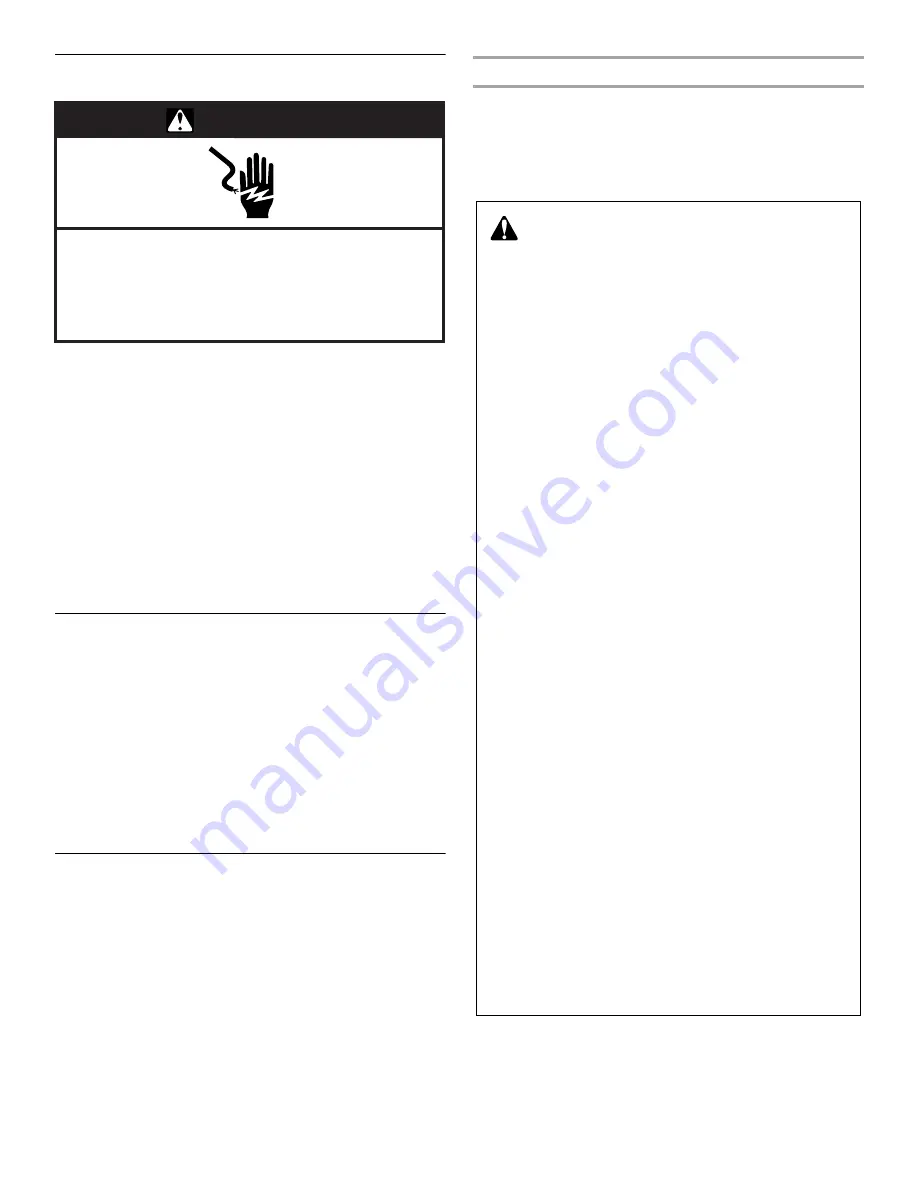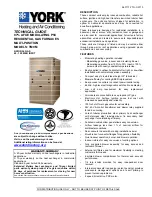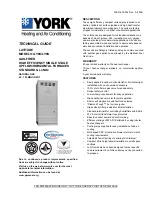
5
Electrical Requirements
■
The furnace must be grounded and wired in accordance with
local codes or, in the absence of local codes, with the
National Electrical Code ANSI/NFPA No. 70 (latest edition).
■
In all instances, other than wiring for the thermostat, the
wiring to be done and any replacement of wire shall conform
with the temperature limitation for Type T wire (63°F rise).
■
The line voltage supply should be routed through a readily
accessible disconnect located within sight of the furnace. A
junction box on the furnace side panel is provided for line
voltage connections. See the Wiring Connection Diagram in
the “Troubleshooting” section for specific connection
information.
■
Proper polarity of the supply connections (“HOT” and
“NEUTRAL”) must be observed to be sure that safety controls
provide the protection intended.
Gas Supply Requirements
This furnace is equipped for use with Natural gas. A conversion
kit is required for use with propane. To order the correct
conversion kit, see “Accessories.”
■
Gas supply piping should be installed in accordance with
local codes and the regulations of the utility. Piping must be
of adequate size to avoid undue pressure drop. Consult the
local utility or gas supplier for complete details on special
requirements for sizing gas piping.
■
If local codes allow the use of a flexible gas appliance
connector, always use a new listed connector. Do not use a
connector which has previously serviced another gas
appliance.
Venting Requirements
Adequate provisions for combustion air and ventilation of
furnace must be made. Refer to Section 5.3, “Air for
Combustion and Ventilation,” of the National Fuel Gas Code,
ANSI Z223.1/NFPA 54 (latest edition), or applicable provisions
of the local building codes. For Category 1 furnaces, vent
installations shall be in accordance with parts 7 and 11 of the
National Fuel Gas Code, ANSI Z223.1/NFPA 54, the local building
codes, and the furnace and vent manufacturer’s instructions.
Existing Venting Systems
When an existing furnace is removed or replaced, the original
venting system may no longer be sized to properly vent the
attached appliances. An improperly sized venting system can
result in spillage of flue products into the living space, the
formation of condensate, leakage, etc. See the “Carbon
Monoxide Poisoning Hazard” for proper test procedure.
WARNING
Electrical Shock Hazard
Electrically ground furnace.
Connect ground wire to green ground screw.
Failure to do so can result in death or electrical shock.
WARNING:
CARBON MONOXIDE POISONING HAZARD
Failure to follow the steps outlined below for each
appliance connected to the venting system being
placed into operation could result in carbon monoxide
poisoning or death.
The following steps shall be followed for each appliance
connected to the venting system being placed into operation,
while all other appliances connected to the venting system are
not in operation:
1. Seal any unused openings in the venting system.
2. Inspect the venting system for proper size and horizontal
pitch, as required in the National Fuel Gas Code,
ANSI Z223.1/NFPA 54 or the CSA B149.1, Natural Gas and
Propane Installation Codes and these instructions.
Determine that there is no blockage or restriction, leakage,
corrosion and other deficiencies which could cause an
unsafe condition.
3. As far as practical, close all building doors and windows
and all doors between the space in which the appliance(s)
connected to the venting system are located and other
spaces of the building.
4. Close fireplace dampers.
5. Turn on clothes dryers and any appliance not connected to
the venting system. Turn on any exhaust fans, such as
range hoods and bathroom exhausts, so they are operating
at maximum speed. Do not operate a summer exhaust fan.
6. Follow the lighting instructions. Place the appliance being
inspected into operation. Adjust the thermostat so
appliance is operating continuously.
7. Test for spillage from draft hood equipped appliances at the
draft hood relief opening after 5 minutes of main burner
operation. Use the flame of a match or candle.
8. If improper venting is observed during any of the above
tests, the venting system must be corrected in accordance
with the National Fuel Gas Code, ANSI Z223.1/NFPA 54
and/or CSA B149.1, Natural Gas and Propane Installation
Codes.
9. After it has been determined that each appliance connected
to the venting system properly vents when tested as
outlined above, return doors, windows, exhaust fans,
fireplace dampers and any other gas-fired burning
appliances to their previous conditions of use.
Summary of Contents for WGFBLT
Page 23: ...23 Wiring Schematic DRAIN LOW ...
Page 25: ...25 ...
Page 26: ...26 Notes ...
Page 27: ...27 Notes ...






































